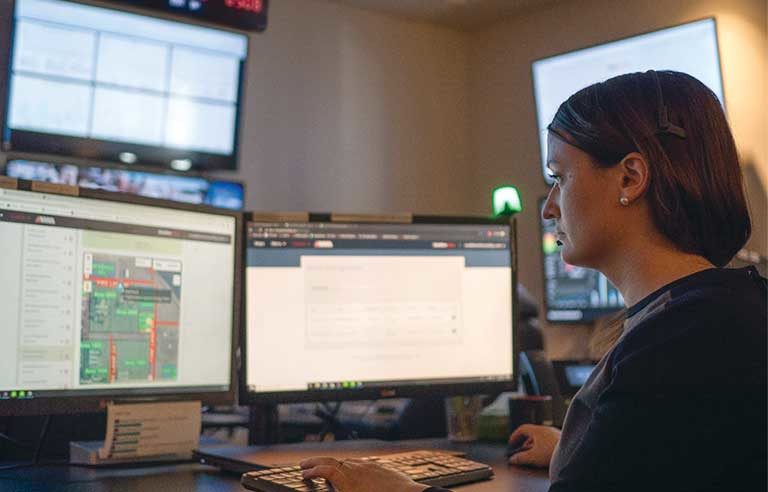Cloud-based lone-worker monitoring
Are monitoring devices cloud connected? In other words, are they sending data in real-time on the location, state and wellness of employees?

Responding is Blackline Safety, Calgary, Alberta.
When an organization decides to invest in a lone worker safety monitoring system, lives are on the line. It’s important to consider safety features and technological advances – not all devices are created equal. Cloud connectivity is key when moving your organization’s safety program to the next level.
Cloud hosting makes it easier for employers to focus on creating high-quality applications instead of worrying about managing on-premises servers or how services are distributed through networks to users. For cloud users, software is typically delivered through a browser or app, making it easy to access its functionality.
When safety monitoring software is delivered through an online interface, employers benefit in numerous ways. Having no software to install, update and manage is critical and means that support isn’t required from busy information technology professionals.
Look for software that’s deployed to wearable devices automatically when connected. Data should be securely stored and available whenever you need access, including alert records, gas exposures, health events and more.
Traditionally, lone worker safety monitoring included employees periodically disrupting their work to check in and confirm their well-being. This could mean calling a co-worker, supervisor, call center or automated call-in system. If an organization required a call every two hours and something happened shortly after, that lone worker could need help for up to two hours before a response was initiated.
Now, this dated check-in system can be replaced with new cloud-connected technology. Devices can now provide increased safety tracking without interrupting productivity.
If an alert is triggered, a fast, accurate response is crucial for your team’s safety. If an organization doesn’t have a supervisor available or an around-the-clock safety control room, outsourcing 24/7 monitoring services is an option to ensure worker safety. When choosing monitoring services, select one with professionally trained agents who address an alert from the moment it comes in until the situation is completely resolved.
When investing in your safety program, look for a vendor who will provide:
- Direct-to-cloud wireless connectivity in which each device includes an embedded cellular or satellite-based radio link.
- Advanced location technology that geo-references every alert.
- Assisted-GPS technology for quick startups and accurate locations.
- Affordable location beacons and custom site plans that position employees in context of your facilities – even in multilevel structures.
- Enterprise-grade software with user access controls that provide the right access to every type of user – administrators to supervisors, health and safety personnel, data science teams, and operations.
- Leading tools that make it easy to manage safety devices that are distributed across business units, sites and teams.
- Location-enabled data analytics to eliminate manual reporting workflows while helping teams quickly view and make sense of their data.
- Two-way voice calling and two-way messaging to a live monitoring team.
- Walkie-talkie functionality built into your wearable.
- 24/7 live monitoring that manages every alert from receipt to resolution, according to clients’ custom protocols.
Editor's note: This article represents the independent views of the author and should not be construed as a National Safety Council endorsement.
Post a comment to this article
Safety+Health welcomes comments that promote respectful dialogue. Please stay on topic. Comments that contain personal attacks, profanity or abusive language – or those aggressively promoting products or services – will be removed. We reserve the right to determine which comments violate our comment policy. (Anonymous comments are welcome; merely skip the “name” field in the comment box. An email address is required but will not be included with your comment.)

